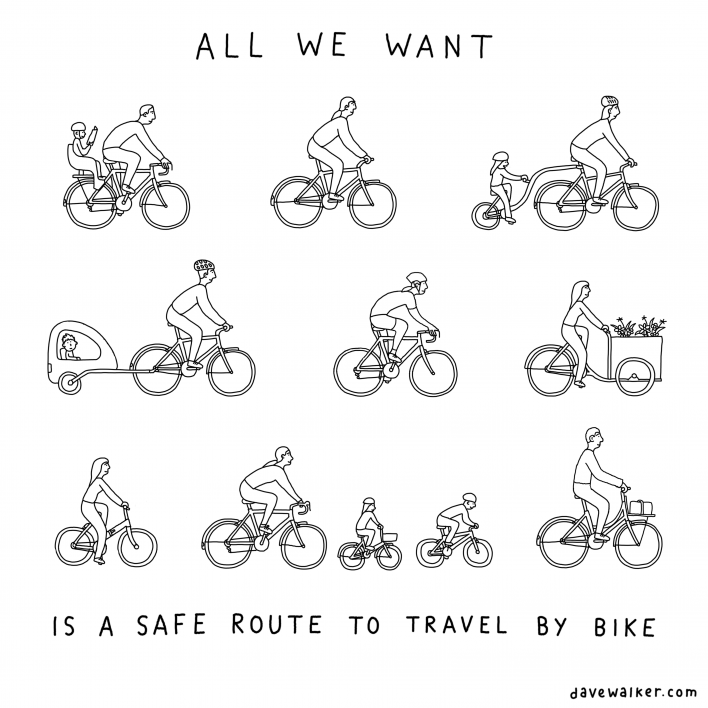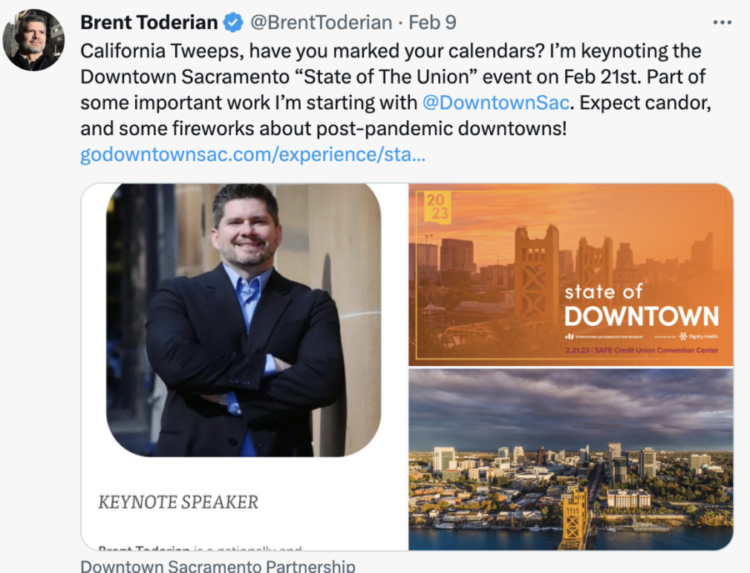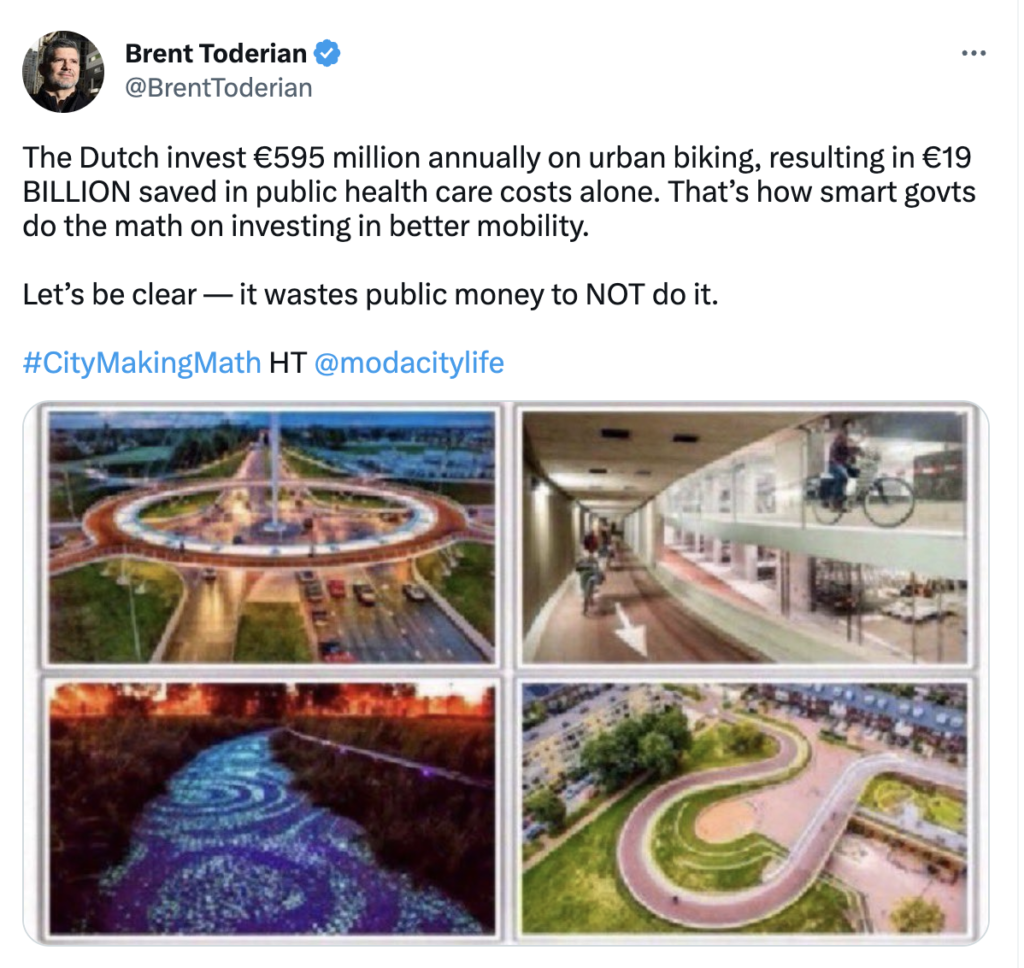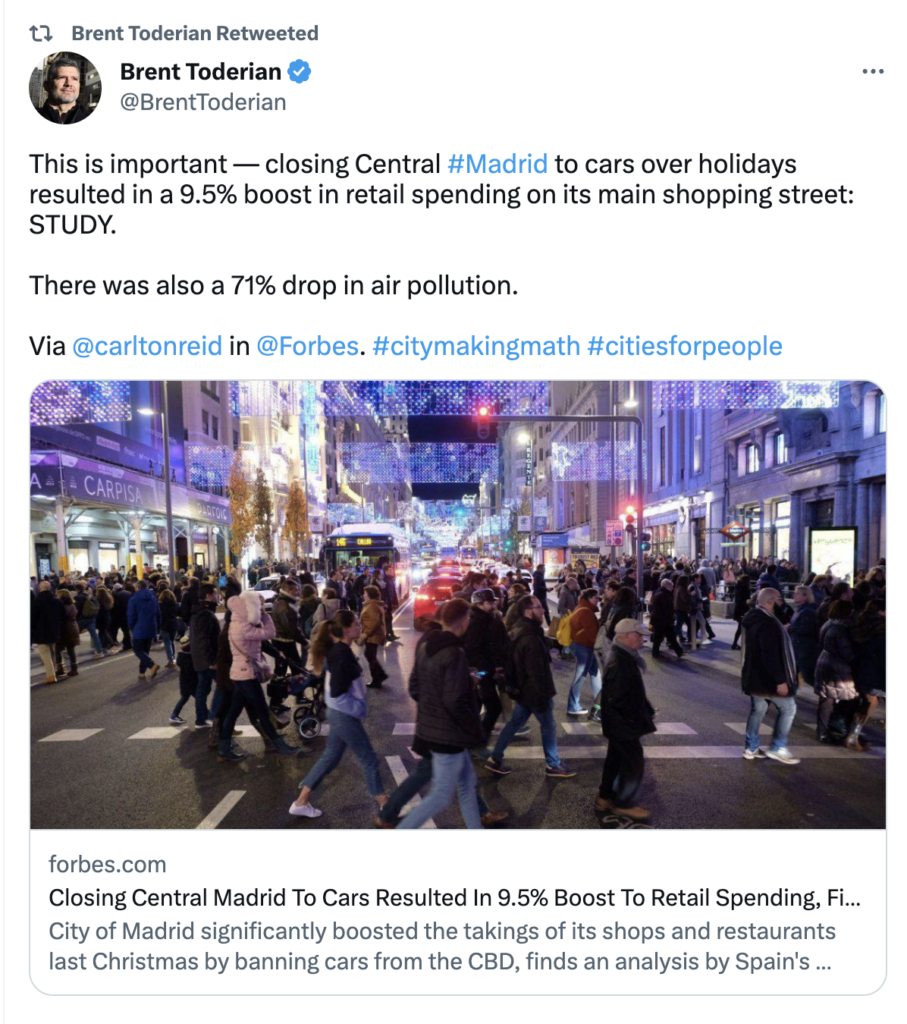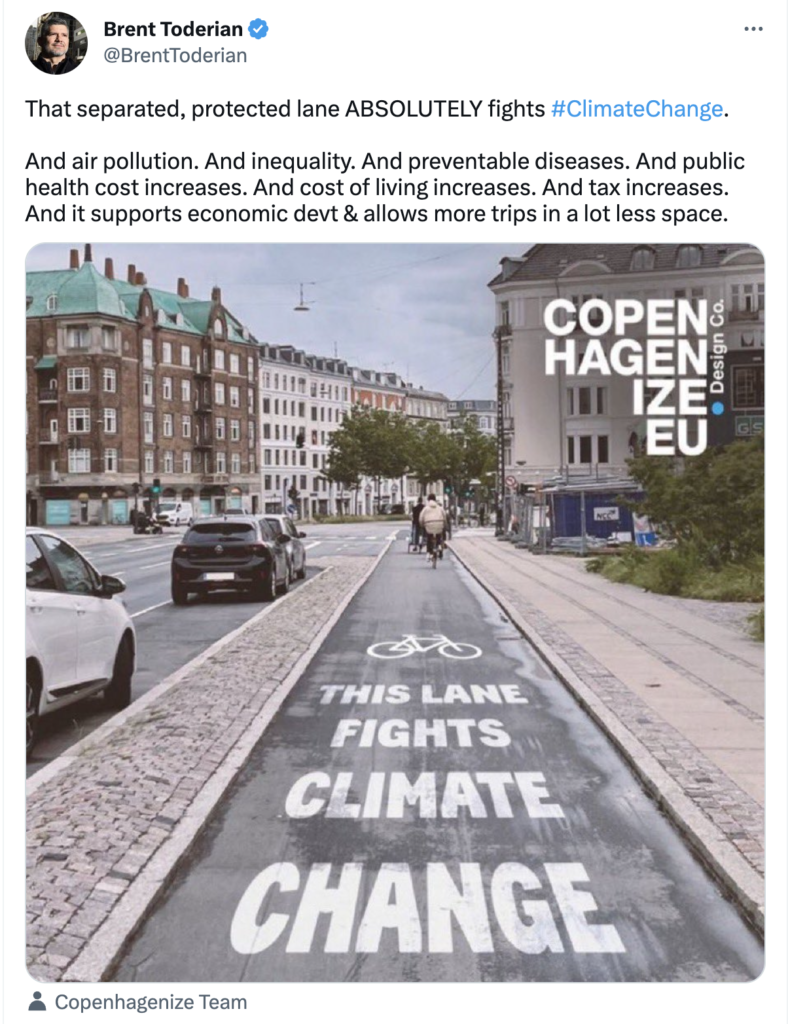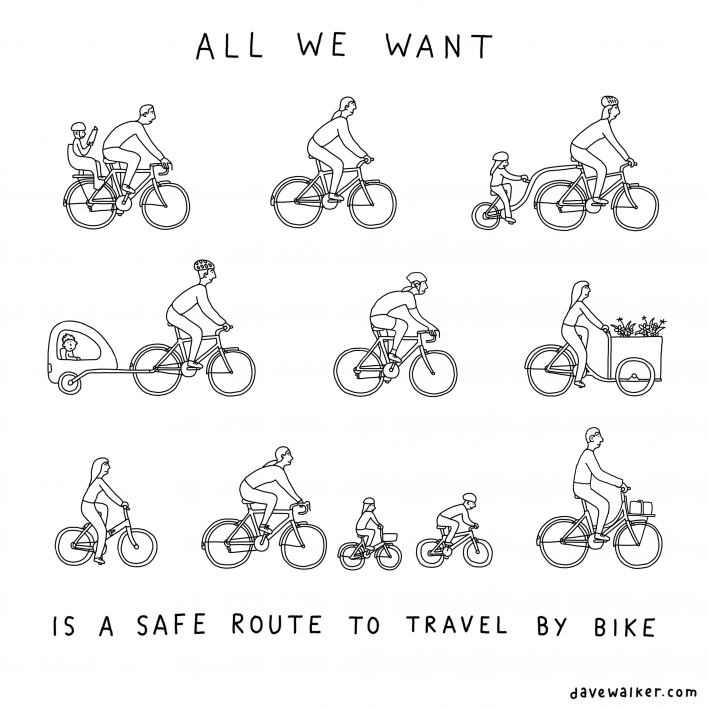
The City of Sacramento has an Active Transportation Commission (ATC), comprised by a group of appointees from each council district, plus the Mayor, and appointees from the Personnel and Public Employees committee. While the City continues to proactively pursue efforts that will improve walking and biking, the ATC believes that we’re not moving quickly enough. Both the Mayors’ Commission on Climate Change and draft Climate Action Plan express urgency needed around strategies that will reduce greenhouse gasses (GHG) and vehicle miles traveled (VMT). This is only possible when our entire community can safely and conveniently access destinations without relying on a private vehicle to do so.
For decades, the City’s investments in car centric infrastructure have created a disconnected active transportation network that has left many people, especially our historically underserved communities with limited transportation options. The ATC is asking for a level of investment from the City now to ensure Sacramento is able to create a more sustainable city for everyone, regardless of their District or zip code. In the spirit of progress, the ATC identified 9 ideas that will improve walking and biking across the City in conjunction with efforts already underway.
Here are the 9 recommendations:
1. Increase Funding for Active Transportation: The City needs to allocate more funding towards active transportation projects to build a sustainable city accessible to everyone.
Many cities have recently benefited from increased funding. In 2005, Congress authorized the Non-Motorized Transportation Pilot Project (NTPP) that provided 25 million dollars to four communities to fund active transportation projects. The result saw an increase in walking and biking trips in some areas up to 48.3%, according to a report from the League of American Bicyclists.
With over 700 transportation projects waiting for the shovels at Public Works, and many are a high priority as determined in the Transportation Priorities Plan, this is the most important of the nine recommendations.
2. Expand Speed Management Program: Lowering vehicle speeds through effective speed management measures will greatly benefit pedestrians and cyclists and contribute to reducing collisions.
The Insurance Institute for Highway Safety’s study showed that reducing speed limits in downtown Seattle reduced collisions resulting in injury by 20%.
3. Develop a Citywide Safe Routes to School Program: Establishing a comprehensive Safe Routes to School program across all schools in the city will encourage more students to walk and bike by providing necessary resources and support.
Portland area teacher Sam Balto successfully started a bike bus for his school that literally sees over a 100 kids participating. Schools across the country are following suit. As the capital city of California, whose climate is particularly suitable for nearly year round outdoor activities, we should be taking the lead with bike buses and safe routes to school.
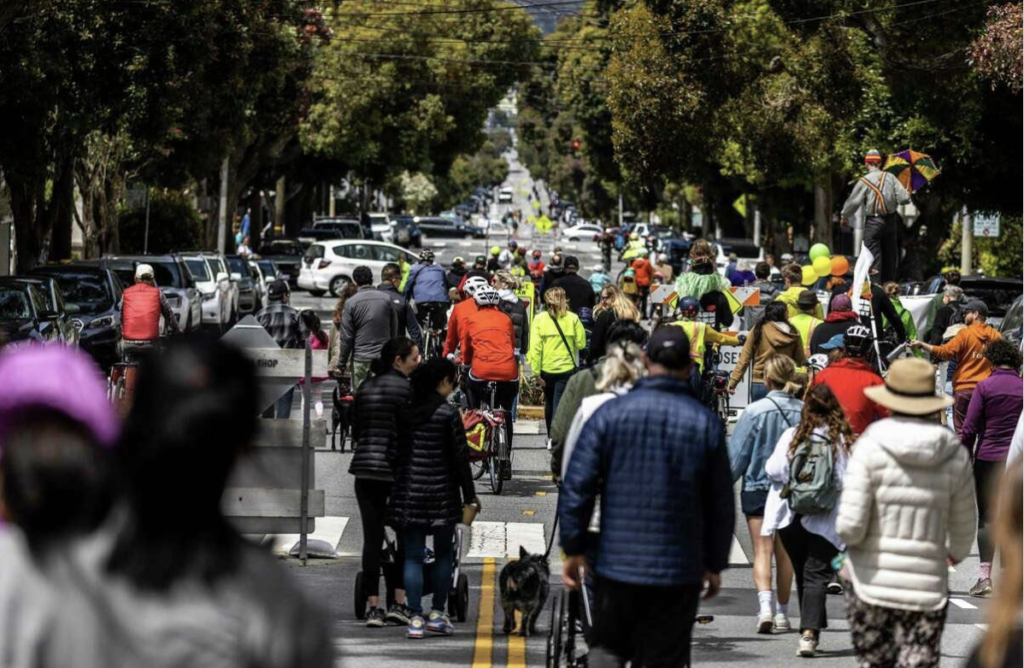
4. Re-establish Slow & Active Streets: Revive the Slow and Active Streets program based on lessons learned from the pilot program and follow the example of cities like San Francisco to create safer, low-traffic routes.
Survey after survey has shown that many people would ride their bikes more often if they felt safe doing so. Many feel apprehensive about sharing the road with cars. Creating routes that slow or limit vehicular travel and create active streets for people would go a long way to encouraging more to walk and bike.
5. Create a Sacramento Quick-Build Bikeways Program: Establish a dedicated funding program for quick-build bikeways projects that utilize low-cost materials and accelerated timelines to rapidly improve street safety and accessibility.
Bikeways don’t have to be drawn-out, expensive projects. They can happen quickly and cheaply with the right amount of planning. Like slow and active streets, creating more space where people feel safe to ride will increase ridership. This can have a myriad of benefits from cleaner air to increased economic growth. Studies show that bike commuters and pedestrians are more likely to shop at local businesses.
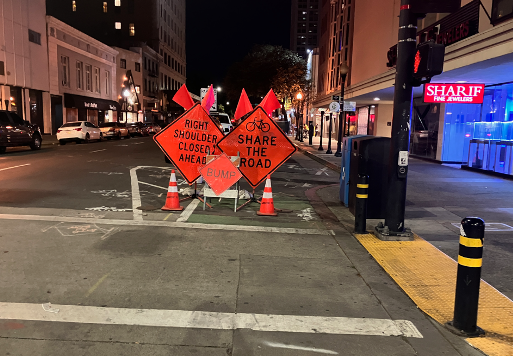
6. Finalize the Construction Detour Policy: Urgently complete the construction detour policy to ensure safe passage for pedestrians and cyclists during construction projects and monitor its implementation to ensure compliance.
As it stands, our city doesn’t have a detour policy in place. For those who choose active transportation, the lack of a plan creates hardship. In some cases, it makes passage by foot or bike impossible.
It’s urgent that the city move forward to finish a detour policy. Sacramento has great potential to be an excellent bike city. Making sure people have a consistently safe route to commute using a form of active transportation is imperative for that to become a reality.
7. Increase Secure Bike Parking: Allocate additional funds to expand bike parking infrastructure to meet the growing demand and enhance safety and convenience for cyclists.
As it stands, there are many places where no secure bike parking exists. Besides sharing the road with distracted motorists, many people are hesitant to use their bikes over their cars for fear of theft. More secure bike parking would help alleviate this fear.
8. Pilot an Electric Bike Library: Seek funding opportunities to establish an electric bike library program similar to Oakland’s initiative, providing affordable long-term rentals and promoting alternative transportation options.
Other cities have also initiated similar programs. Calgary has started an electric bike library at some of their light-rail stations to encourage people in the suburbs to use active transportation.
Sacramento has a small fleet of e-trikes at Colonial Heights library, and SABA has a fleet that we are taking to community events to offer people a chance to get on a bike and experience the difference of an ebike.
9. Develop an ATC Dashboard: Create an online dashboard to provide the public with easy access to information about the Active Transportation Commission’s efforts, including letters to the mayor and council, policy updates, grant applications, project reviews, bicycle and pedestrian data, and progress towards GHG and VMT reduction targets.
For more info on these recommendations and ways to be engaged with the ATC, find your Active Transportation Commissioner here. We encourage you to reach out to your Commissioner and discuss any of these recommendations. For more info on each recommendation, the entire report can be found here. The ATC will be bringing these before City Council on August 29th, 2023 and we hope you’ll join us in bringing these recommendations to our electeds.

